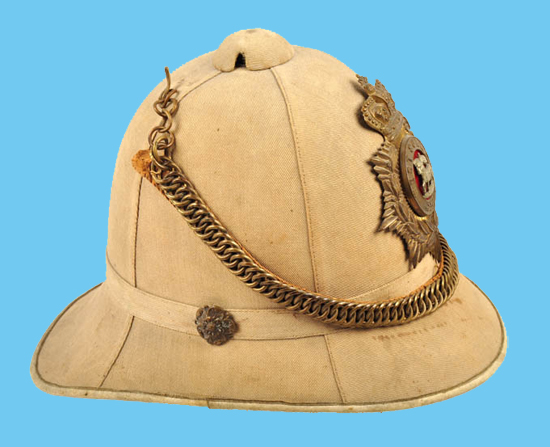
An example of a Colonial Pattern helmet with four panels rather than the more usual and authorized six panels. This example is to an Other Rank of the Queen’s Royal Regiment (West Surrey). (Photo courtesy Roland Gruschka)
The 1st Battalion West Surrey was stationed in Malta in 1892 and it appears that this type of helmet was not uncommon in Mediterranean stations for the British Army. However, the Dress Regulations of 1894 state that puggarees were to be worn in such stations as India, Bermuda, Ceylon, Hong Kong, Egypt, the Straits Settlements, West Indies, Mauritius, Malta, West Coast of Africa and Cyprus and that the full Home Service pattern helmet plate was to be worn at other stations, i.e. those where the puggaree was not authorized. There was a term “Mediterranean Order” which translated to no puggaree but full helmet plate and it appears that the cork ventilation was also a feature of this “order.” In 1899 puggarees were authorised for all stations abroad.
Also of note is the use of external chinchain bosses (rosettes) which was not unusual but not authorized. It seems, once again, that almost anything “goes” in the British Army of that time.
The real reason for four panel helmets will probably never be known as the Army Order 35 of 1877 stipulated six panels and was never overridden. It would have been cheaper for helmet makers to make them in six panels because of far less wastage of finishing cloth.
It seems that some regiments in the late Victorian and early Edwardian times bought their men a second helmet from regimental funds. Generally, this was a smart white helmet only worn on parades and they were often finished to a higher quality than the government Pimlico issued examples. It should be mentioned that khaki versions are frequently found.
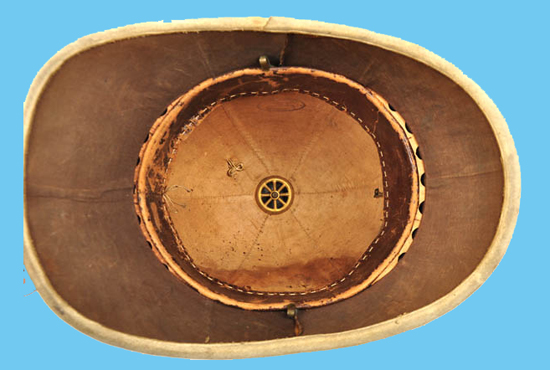
The interior of the West Surrey helmet showing the corrugated cork ventilation between the headband and the helmet shell. The maker’s stamp is also visible. This method of ventilation does not appear in India where it was considered to be inadequate. (Photo courtesy Roland Gruschka)
The four panel version of the helmet was used in British colonies and above is an example from Queensland, Australia. Below is a Canadian example.
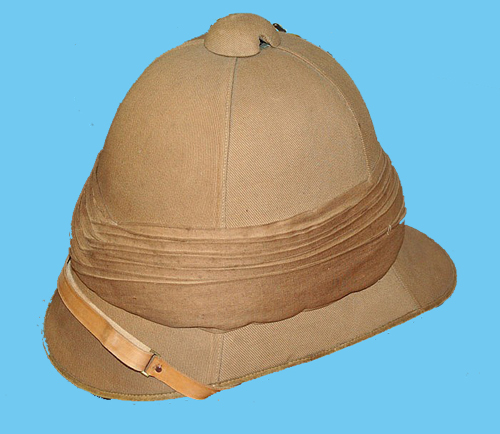
Another four panel helmet but this one with puggaree and no evidence of a helmet plate ever having been attached. Possibly a slider puggaree badge was used. (Author’s collection)
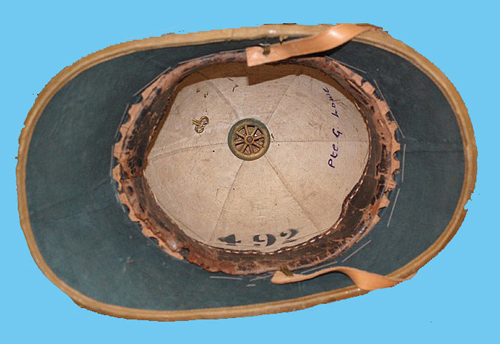
The interior of the un-badged helmet which is identical to the West Surrey version. (Author’s collection)
Thanks go to Christopher Mills (The Jaunty Hat) who generously provided valuable information.
Stuart Bates

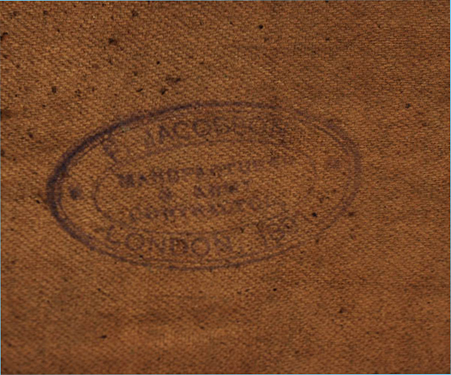
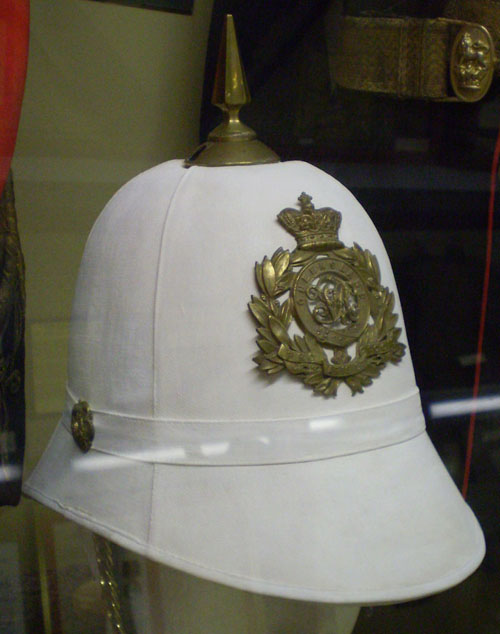
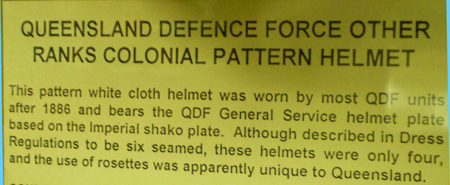
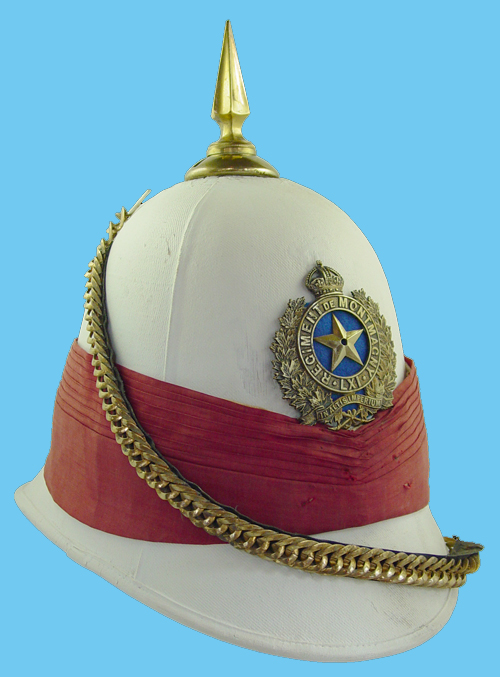
Hello,
I am intrigued by all this as I have just bought a four-panel pith helmet (originally made in London) and was wondering about its provenance ? It looks very much like the last helmet pictured on this page but it is in white and retains its original puggaree which is also in white. It does not bear any sign of having once had a badge. As in many pith helmets I have seen the original chin strap is missing, please check the attached link : http://www.delcampe.net/item.php?id=358126919&language=E
I am into reenactment of the 2nd Boer War and wish to be historically accurate, hence I hope you can determine if the pith helmet I just bought is period correct for my purpose ? I realise the listing also mentions it could have been used during the Sudan campaign ? Any help on clarifying this matter is gratefully accepted. Cheers.
Hi Paul,
what does the maker’s stamp say? I can make out “L,” “London,” “& Sons,” and “A.” I have never heard of such a manufacturer. It is quite a nice looking helmet but for me either a theatrical piece or a repro. I say this because there is no ventilation around the leather headband. Or perhaps a replacement headband was fitted at some later stage. Is there any evidence of this?
It is practically impossible to say whether it was used in any particular war and sellers are wont to suggest the Zulu, Boer wars as well as India.
Regards,
Stuart